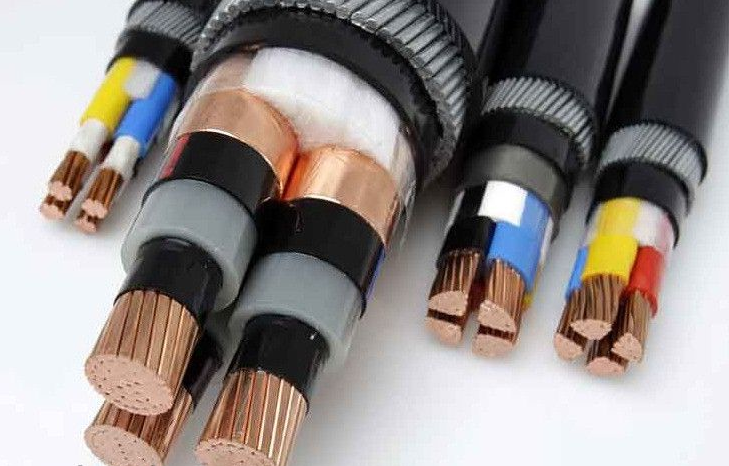Let us compare crosslinked polyethylene (XLPE) and ethylene propylene rubber (EPR) as insulating materials for high voltage (HV) cables. Both XLPE and EPR have their merits, and the choice depends on specific requirements and application conditions. While XLPE dominates due to its ease of handling, EPR offers flexibility and reduced thermal expansion. Keep these factors in mind when selecting an insulating material for HV cables.
- XLPE (Crosslinked Polyethylene)
- Composition: XLPE is a synthetic polymer derived from ethylene. It is crosslinked to improve its properties.
- Ease of Processing: XLPE is easy to handle and process.
- Thermal Expansion: It exhibits significant thermal expansion when heated.
- Dielectric Properties: XLPE has low losses and is suitable for HV applications.
- Advantages: Widely used due to ease of handling and reliability.
- Disadvantages: Limited information on long-term reliability compared to paper/oil systems.
- EPR (Ethylene Propylene Rubber)
- Composition: EPR is a synthetic rubber with a combination of ethylene and propylene monomers.
- Thermal Expansion: EPR expands less than XLPE above 90°C.
- Dielectric Properties: Not as good as XLPE but still suitable for higher voltage applications.
- Advantages:
- Flexibility: EPR offers extra flexibility.
- Reduced Thermal Expansion: It maintains higher thermal conductivity while expanding less.
- Low Sensitivity to Water Treeing: EPR is less affected by water treeing (a type of insulation degradation). - Disadvantages:
- Lower dielectric properties compared to XLPE.
Benefits of EPR insulated cables
Ethylene Propylene Rubber (EPR) is a polymer based on copolymers of ethylene and propylene. It is one of a number of rubber insulation materials. The EPR polymers can be tailored for different applications.
EPR rubber is noticeably softer than Natural rubbers and Styrene-Butadiene rubbers so can be used as a replacement material in many applications. Where greater hardness is required, the EPR compound can be blended with polyethylene (PE) or polypropylene (PP) to achieve improved physical properties. Mechanical properties include resistance to compression, cutting, impact, tearing and abrasion.
EPR is widely used as an insulation material for electric cables due to its high dielectric strength but it is also used as a sheathing material exhibiting excellent ozone and weathering resistance. EPR has a wide thermal range typically in the region of -55°C to 150°C. Unlike other organic rubbers, the copper conductor does not need to be tinned to prevent deterioration of the rubber.
Although EPR does not offer a good resistance to oils, it is resistant to a wide range of other chemicals including many acids, alkalis and organic solvents. It is also highly resistant to moisture.
EPR insulation is suitable for many higher voltage applications and whilst its dielectric properties are not as good as those of XLPE it does have some important advantages over XLPE including extra flexibility, reduced thermal expansion, and low sensitivity to water treeing.
Benefits of XLPE insulated cables
Cross-linked polyethylene (XLPE) is a thermoset insulation material. Crosslinking polymers is a process which changes the molecular structure of the polymer chains so that they are more tightly bound together and this crosslinking is done either by chemical means or physical means. Chemical crosslinking involves the addition of chemicals or initiators such as silane or peroxide to generate free radicals which form the crosslinking. Physical crosslinking involves subjecting the polymer to a high energy source such as high-energy electron or microwave radiation.
XLPE is suitable for voltage ranges from low to extra high voltage, surpassing other insulation materials such as PVC, Ethylene Propylene Rubber (EPR) and silicone rubbers. Cross-linking the polyethylene also enhances the chemical and oil resistance at elevated temperatures and makes it suitable for use as a Low Smoke Zero Halogen material.
Polyethylene (PE) material itself has excellent dielectric strength, high insulation resistance, and a low dissipation factor at all frequencies making it an ideal insulator, however it is limited in its temperature range. Cross-linking the PE to become XLPE increases the temperature range of the insulation whilst maintaining the electrical properties.
The mechanical properties of the XLPE are superior to many other insulations, offering greater tensile strength, elongation and impact resistances. The addition of carbon black can be used to further enhance hot deformation and cut through resistance. The XLPE insulation will not melt or drip, even at the temperatures of soldering irons, and it has increased flow resistance and improved ageing characteristics.
Improved water-tree resistance is another benefit of XLPE insulation for LV cables and MV cables over PE insulations. Water treeing is a defect which is the result of imperfections in the insulation where fracture lines occur and grow in the direction of the electric field, increasing with electrical stress. It should be noted that this effect is not limited to PE materials.
Comparison of XLPE and EPR Properties
| Properties | XLPE | EPR |
|---|---|---|
| Density, g/cm3 | 0.92 | 1-2 - 1.4 |
| Tensile Strength, MPa | 19 | 9 - 12 |
| Elongation, % | 500 | 250 - 350 |
| Modulus of Elsticity, MPa | 121 | 5-14 |
| Heat Distortion, % | 20 | 5 - 8 |
| Thermal conductivity, W/mOC | Mark | Otto |
| Dielectric Constant | 2.3 | 2.5 - 3.0 |
| Dissipation Factor, % | ||
| @20OC | <0.03 | 0.16 - 0.3 |
| @90OC | <0.03 | 0.3 - 1.0 |
| Volume Resistivity, ohm-cm at 23OC | 1016 | 1013 |
| Short-term AC breakdown on miniature cable, kV/mm | 48 | 30 - 40 |
References
https://www.elandcables.com/
